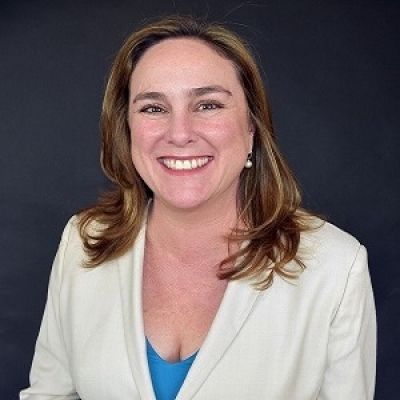A growing chorus of voices is calling for the rescission of Obama-era guidance addressing discipline disparities by race and special education status in public schools. Mike Petrilli—who wants the guidance scrapped, and who is president of the Fordham Institute, of which I’m a board member—recently summarized it well:
In effect, it said that districts could be investigated for violating students’ civil rights if data collected by the Education Department’s Office for Civil Rights showed significant disproportionality—as would happen when, for example, African Americans were suspended by their schools at higher rates than whites. It also stated that districts could be found in violation of civil rights laws even if their discipline policies were race-neutral and applied evenhandedly.
I understand the urge to want this guidance removed, but I have seen its benefits firsthand and support keeping it. The federal government has a legitimate role in ending institutional racism when states, districts, and schools fail to act—and, unfortunately, that’s the situation in which we Americans find ourselves.
The guidance is broad, covering behaviors from repetitive class disruption to campus violence. To be sure, as a parent, I want disruptive students removed from my children’s classes so that those students who learn best in a calm, orderly context can have the benefit of a rigorous, uninterrupted environment. Teachers too often say they need to get the defiant kids out so they can teach the students who want to learn. As a school leader, I understand this sentiment. But many of those who call for exclusionary policies are mistaken in believing that disruptive students do not want to learn. In my experience, all students want to—and are able to—learn when the subject matter, environment, and methodologies suit them. And these can evolve as kids mature. Today’s busybody learners, for example, may become tomorrow’s stationary scholars as they develop executive functioning skills and passionate interests.
Another issue is how we define students’ “respect” for and “defiance” of teachers. The Obama-era guidance removes “willful defiance” from codes of conduct as a reason for suspension or expulsion. This makes opponents cringe and cite the positive effects that respectful students have on classrooms. Most often I see this reaction from school and classroom leaders who have not yet internalized the basic fact that students are kids and adults are, well, adults. These leaders define respect as submission, which they expect to receive before they’ve established respectful relationships with their students. In matters of learning progress, they assume the students are at fault—even when a student is just shy and unengaged, has trouble sitting still, or suffers from mental health challenges. The best teachers know that, while they may be compensating for years of academic neglect, student learning is their responsibility. They collaboratively create campus positive behavior and intervention systems. They know how to manage a classroom, differentiate instruction, and identify behaviors that are signs of special needs, so they’re not left with one option: ejecting problematic students.
At the other end of this discipline scale are students who fight, engage in bullying or sexual harassment, or bring weapons or drugs to school. In common disciplinary codes, these offenses carry mandatory formulas for days of suspension or expulsion. I have seen and upheld disciplinary cases for which serious action must be taken to protect the rights and safety of rule-abiding students. Nevertheless, we have to remember that a student who is suspended remains in our community, albeit out of the school, where they can harm themselves and others. The line between the gates of our schools and the street corner is fictitious for our middle schoolers who live in and navigate both. Therefore, we cannot just push challenging students out (there is no “out”). We must have a process for young offenders to get the punishment, counseling, mental health support, redirection, and redemption they need to end the behaviors that poison other students’ futures as well as their own. As educators, we must educate every student. In all but the most extreme cases, we can find creative ways to do that without suspension or expulsion.
Simply put, the guidance isn’t the problem. School systems have a responsibility to train site staff to develop positive behavior and intervention systems. Unprepared teachers who have never developed the skill sets to establish engaging learning environments or for genuine problem solving during conflicts need support to succeed in classrooms. Rescission of the guidance is therefore the wrong solution. We must identify better ways to move forward.
Charter schools are one option, and they ought to play a significant role. I lead a network of them in California and actively seek out the students for whom more traditional public schools weren’t a good fit. We change the educational model to match the kids. Sometimes all of our algebra students stand at the board instead of watching the teacher’s back; we use project-based learning that engages our pupils kinesthetically and intellectually; and we pair the scientific method with an emphasis on creativity. Many charter leaders and I pride ourselves on creating better environments to reach both the bullies and the bullied, and to ensure that students who act out due to trauma or other special needs get the support required to become and remain welcome members of our larger community. If anyone can help end institutional racism in the classroom, we charter leaders can. And we must.
So, yes, if the school cannot change to meet the students’ needs and students are irreparably disrupting the learning process, remove them from the environment, but don’t remove them from education. Give them to me or another high quality charter or traditional public school with a commitment to justice. Give them to someone who will identify their learning needs by looking for what is good in the young people instead of focusing on what they’re doing wrong. Build their options from their best qualities that draw on their highest aspirations. I’m not advocating academic denial, only that we teach our students what real excellence is by helping them experience it in their areas of passion and strength. School choice is a great way to accomplish this.
Finally, we must not forget that baked into these regrettable exclusionary tactics are race and gender prejudices. The data clearly show, for example, a badly disproportionate effect on young black males. Reversing such terrible trends (changing this reality) is a defining impetus for the guidance, and it’s a key reason it ought to stay in place. We must pair the Education Department’s policies with professional development and tough love that target the learned prejudices—explicit and implicit—of school staff. Many of these men and women identify as progressive people, and they’re often unaware of their biases. Finding out that they exist can be hard, but confronting and correcting these prejudices are vital. We cannot end the practices of suspension and expulsion by simply failing to report them or by ignoring disruptive students. These are not answers, they’re just malicious compliance—bureaucrats carrying out policies with which they disagree to their most illogical conclusion. The Department of Education’s guidance is not about compliance; it’s about putting an end to institutional racism in our educational system.
We can do this. And the Department of Education’s guidance is an important tool in achieving that end. It’s not about disciplinary systems alone. It is about improving the quality of the educational practices used in our schools and addressing the deep-seated needs of our children. That’s where the issue lies. It’s not about fault anymore. It’s about action.
Caprice Young is the Chief Executive Officer & Superintendent of Magnolia Public Schools and is a member of the Thomas B. Fordham Institute’s Board of Trustees.

